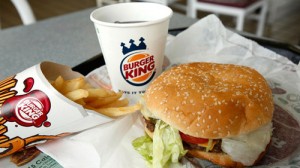3rd July 2014
Good Morning Singapore!
Breakfast
It is a glorious morning here at home in Singapore and I have decided to start my day with some cut red apples sprinkled with cinnamon for breakfast. The apples were Fuji apples that originate from Japan but are grown in apple-growing states in America as well as various regions of China. Let me explain the path these apples have travelled, in order to arrive to my breakfast bowl, and I’ll point out the stages where oil was used as I go through. In order to cultivate these apples, energy and pesticides are used (oil is used). Once the apples have been successfully grown in China, they are picked and sent off to a factory (oil is used). Once they reach the factory, oil and energy are used to wash, clean, and package these apples. They are packaged in plastic bags which are produced in other factories, using large amounts of fossil fuels to do so. They are then sent to the apple factory for packaging (oil is used). Since the apples we eat in Singapore come from China, the apples must then shipped off to Singapore in temperature controlled containers (oil is used) so that the products remain fresh and confirm to Singapore Food Authority’s stringent quality controls. Once they reach Singapore, the apples are then distributed to various grocery stores (oil is used). My parents drive to the grocery store (oil is used) every weekend where the pick up these apples. In this process, there is a large amount of energy used in the production and manufacturing, followed by an even higher amount in the transportation and distribution of the apples.
Now for the second part of my breakfast, the journey of the cinnamon that I sprinkled on the apples is equally interesting. Like most spices the cinnamon in Singapore comes from India. The cinnamon is first harvested in cinnamon plantations in Southern India. Labor is cheap in India, so the cinnamon is harvested by hands; however fertilizers and pesticides, which require oil energy to produce are used extensively in the plantations to boost production. The cinnamon is then transported up north to a factory for a series of processing steps including peeling, scraping, rubbing with a bass rod, drying, bundling and powdering. A significant amount of oil and energy is used for this purpose. The plastic containers into which these are packaged are sourced from China. The final product is then exported to Singapore, distributed to grocery stores, from where I pick up the product. At every stage in this process, oil is used to move the goods from the producer to the end consumer.
The journey of the apple and the cinnamon clearly reinforce what Manning has said i.e. that for every calorie of food, a calorie of oil is used.
Lunch
My lunch was at Burger King, in order to get there, I used a public bus. I ate a Burger, with a side of fries and some Coca-Cola.
The Meat in the burger comes from Lopez Foods in Oklahoma, USA. McCain Foods supplies the fries. The Coca-Cola comes from the Coca-Cola Company. Lopez Foods grow their meat, sends it to a factory, and process it into meat patties. These patties are then exported to Singapore and then distributed to Burger King’s restaurants in Singapore. The Coca-Cola starts off from the Coca-Cola syrup plant in Chicago. Once the syrup has been processed through a factory, it is sent out from Chicago to a bottling plant in the USA, in Florida. Once it has been bottled, using plastic bottles that are made in China, the bottles are shipped out to Singapore. Burger King sources these bottles from the local distributor of Coca Cola in Singapore.
McCain Foods Limited has factories all over the world, the closest to Singapore being China, which is where the fries come from. The potatoes come from various regions in China, which have been grown using pesticides and are genetically modified. These potatoes are sent to the factory, and processed into fries. These fries are then frozen and sent off to Singapore. Once they reach Singapore, they are distributed to Burger King.
One may wonder what the role of Burger King is in food production when all of the food production is outsourced. Well, Burger King refries the fries, re-cooks the patties, and re distributes the coke, all into cases made out of paper or plastic. In order to create these, more oil is used. These cases are made in China, and imported to Singapore. The ketchup, the salt and pepper, the paper cups, the plates and straws are similarly sourced from various locations and assembled at the point of consumption into a meal.
Manning in his article explains how the abundance of sugar from plantations in the colonies led to the industrialization of sugar. The case of fast foods is a more extreme example of industrialization of food resulting in the consumption of a lot more oil for a single calorie of food. The entire process is a complex maze involving many companies across the globe for various items. Energy and fuel are extensively used to mass produce and widely distribute fast foods. The abundance and convenience of fast foods overlook concerns that these are not food in its natural form and may be completely unhealthy for people who consume them regularly.
Dinner
As evening approached, I decided that I would have my dinner at a local organic restaurant called Real Foods. I ate a capsicum filled with a vegetable patty, on a bed of greens.
This meal fully consisted of organic vegetables, which are grown organically in neighboring Malaysia and then brought into Singapore. Since these vegetables are organically grown, the harvesting of the vegetables consumes little to no oil, and no fertilizers or pesticides. These vegetables are picked out of the farms and sent straight to Real Foods where the vegetables are cleaned, and cooked. The factory stage had been omitted from the entire process. The taste of the food was palpably refreshing, suggesting that the nutritional content of the food was very high. Just the thought of how little oil may have been used in its production seemed to make the meal taste that much more delicious!





